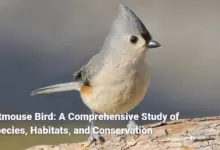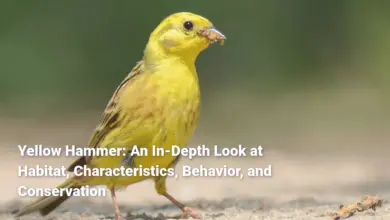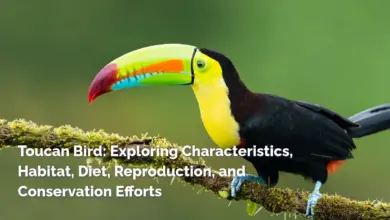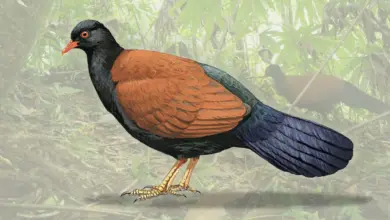Budgerigar: A Comprehensive Guide to Types, Care, Behavior, and Lifespan
Budgerigar: An In-Depth Exploration
Budgerigars, often affectionately known as budgies, are small, vibrant birds that have captured the hearts of pet enthusiasts worldwide. Originally hailing from the harsh climates of Australia, where they navigate the arid landscapes in flocks, these birds have evolved to become beloved companions in households across the globe. With their melodious chirps, vivid plumage, and charming personalities, budgerigars offer a unique blend of entertainment and companionship.
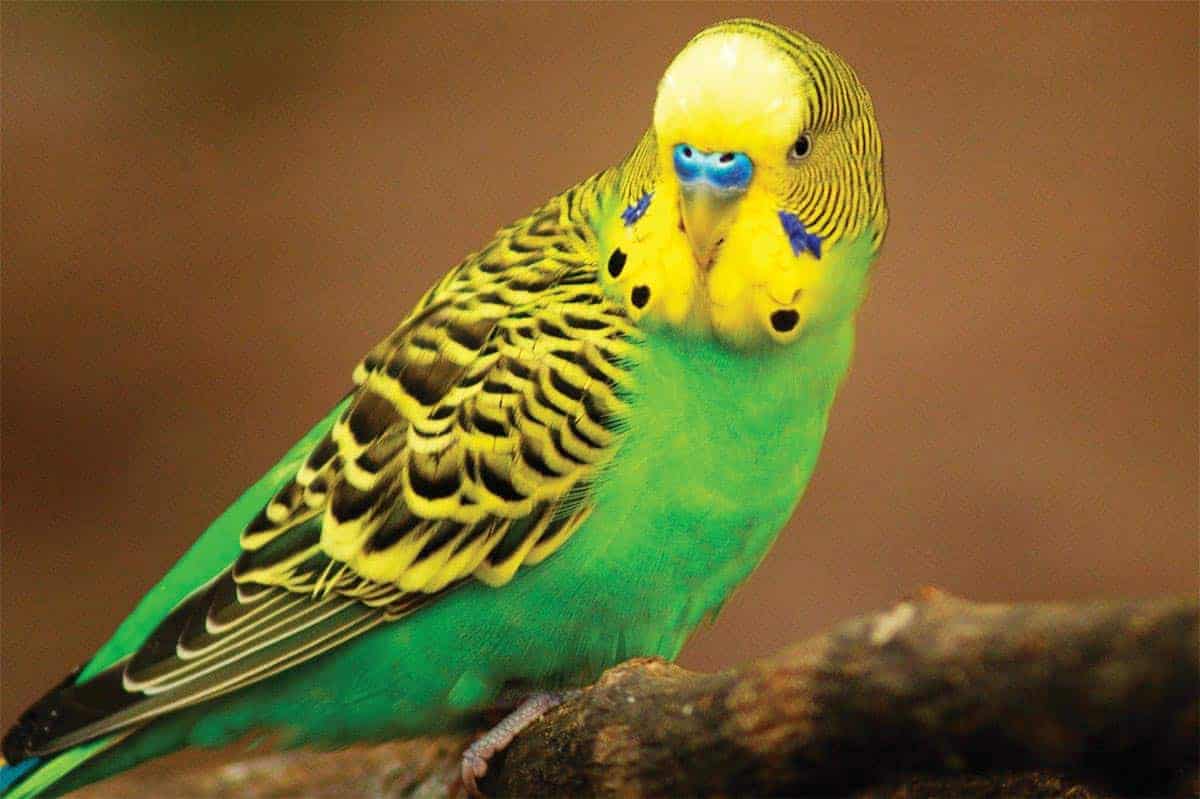
Whether perched on a shoulder, engaging with toys, or mimicking human speech, these tiny parrots bring immense joy to their owners. This comprehensive exploration delves into the various facets of budgerigars, from their types and characteristics to their care needs, behaviors, and implications in aviculture. By understanding these fascinating creatures, prospective and current owners can foster a thriving and enriching environment for their feathered friends.
Types of Budgerigars
Budgerigars, known for their varied hues and playful demeanor, come in several distinct types that reflect both their origins and selective breeding efforts. Each type boasts unique characteristics, making them suitable for different owner preferences and environments. Here is a comparison of the primary types:
English Budgerigar Characteristics
English budgerigars, also known as show budgies, are a fascinating variety renowned for their distinct physical traits and larger size compared to their wild counterparts. Imagine them as the regal royals of the budgerigar world, parading their luscious, over-the-top finery at every avian gala. Here’s a detailed look at what makes these birds so special:
1. Physical Characteristics:
- Size: English budgerigars are significantly larger than their Australian counterparts, typically measuring around 25 centimeters in length and weighing between 50-60 grams. Their robust size gives them a regal appearance and makes them stand out in any aviary.
- Feathering: The feathers of English budgerigars are denser and longer, creating a puffball effect. This voluminous plumage is especially prominent around the head, where the feathers often form a lush “mane.”
- Head Shape: The head of an English budgerigar is more rounded, with a pronounced brow that gives them a distinguished look. The cere (fleshy area above the beak) is often a vivid blue in males and a brownish color in females.
2. Behavioral Traits:
- English budgerigars are known for their calm demeanor. Unlike their Australian cousins, who are often described as vivacious and hyperactive, English budgies exude a serene aura. They are less flighty and more inclined to sit quietly, making them ideal pets for individuals who appreciate tranquility.
- Their intelligence is noteworthy. English budgies can be trained to perform tricks, mimic speech, and recognize patterns. Their keen ability to learn and adapt makes them engaging companions.
3. Exhibit Standards:
- In the world of aviculture, English budgerigars are prized for shows. Judges assess them based on several criteria, including size, feather condition, and color vibrancy. Birds that meet the stringent standards often win accolades and become sought-after for breeding.
4. Comparison with Australian Budgies:
| Attribute | English Budgerigar | Australian Budgerigar |
|---|---|---|
| Size | Larger, around 25 centimeters | Smaller, around 18 centimeters |
| Feather Density | Dense, long feathers, especially around the head | Sleek, compact feathers |
| Temperament | Calm and composed | Lively and energetic |
| Exhibit Focus | Prized for shows, with strict exhibit standards | Generally not used for show purposes |
Australian Budgerigar Traits
Australian budgerigars, commonly referred to as the “true” or wild-type budgies, are the quintessential depiction of these birds in their native habitat. Imagine these as the rugged, adventurous explorers of the budgie realm, thriving in the harsh yet magnificent outback. Here’s an in-depth look at their distinct traits:
1. Physical Characteristics:
- Size: Australian budgerigars are more diminutive compared to their English counterparts, typically measuring between 18-20 centimeters in length and weighing around 30-40 grams. Their streamlined, agile bodies are built for swift flights and foraging in the wild.
- Feathering: Their plumage is sleek and tight, designed for efficiency and speed. This functional feathering helps them navigate through the dense flora and maintain agility.
- Head Shape: Unlike the rounded heads of the English budgies, Australian budgerigars have a more streamlined, angular head, optimized for quick movements and heightened alertness.
2. Behavioral Traits:
- Australian budgerigars burst with energy. They are highly active, constantly exploring, chirping, and foraging. Their lively nature makes them incredibly entertaining to watch.
- These budgies are extremely social, forming large flocks in the wild to enhance safety and ensure success in foraging. Their social tendencies translate well to domestic environments, where they thrive in groups.
3. Natural Coloration:
- The predominant coloration of Australian budgerigars is a bright green body with a yellow face, adorned with black scalloped markings on their wings and a series of black banding patterns extending from the back of their heads.
- Other common mutations include various shades of blue and gray, introducing diversity but often retaining their ancestral vibrancy.
4. Comparison with English Budgies:
| Attribute | English Budgerigar | Australian Budgerigar |
|---|---|---|
| Size | Approximately 25 centimeters | Approximately 18-20 centimeters |
| Feather Density | Dense, voluminous feathers | Sleek, compact feathers |
| Coloration | Variety of show-specific colors | Predominantly green with yellow and black markings |
| Energy Levels | Calm and manageable | Highly active and agile |
| Lifespan | Typically 7-9 years | Can live up to 15 years |
Hybrid Budgerigar Varieties
Hybrid budgerigar varieties are the result of deliberate breeding between the English and Australian types, aiming to amalgamate the best traits of both. These hybrids present a fascinating blend of characteristics, much like a harmonious fusion of the explorer’s spirit with the royal demeanor. Here’s an insightful exploration:
1. Physical Characteristics:
- Size: Hybrids tend to vary greatly in size, depending on the predominant genetic influence. They can range from the smaller stature of Australian budgies to the larger frame of English ones, often presenting a medium build averaging around 20-23 centimeters.
- Feathering: The hybrids typically exhibit a mix of feathering traits – some may have the denser feather structure of English budgies, while others retain the sleek, streamlined feathers of Australian types.
- Head Shape: A blend of rounded and angular head shapes, hybrids may possess a well-balanced facial structure appealing to both breeders and enthusiasts.
2. Behavioral Traits:
- The behavioral diversity of hybrids is equally intriguing. Some hybrids inherit the calm and composed temperament of the English budgies, while others display the energetic, lively traits of the Australian types.
- This variability means hybrids can cater to a wide range of owner preferences, from those seeking a serene pet to those desiring an active and outgoing companion.
3. Breeding Practices:
- The intentional crossing of these variants is performed to enhance genetic diversity and health resilience while producing unique aesthetic combinations. This practice aims to eradicate genetic weaknesses present in purebreds and introduce vigor through hybrid vigor.
- Breeders often focus on achieving specific color mutations or patterns by understanding and manipulating genetic potentials.
4. Color Variations and Unique Mutations:
- Hybrids showcase an impressive palette of colors, often presenting unique and rare combinations that attract avian enthusiasts. For instance, a hybrid may exhibit the vibrant green body of an Australian budgie blended with the cobalt blue shades typical of an English budgie.
- The hybridization process sometimes results in unexpected yet delightful colorations and patterns, broadening the spectrum of visually appealing budgies.
5. Comparison with Purebred Budgies:
| Attribute | English Budgerigar | Australian Budgerigar | Hybrid Budgerigar |
|---|---|---|---|
| Size | Approximately 25 centimeters | Approximately 18-20 centimeters | Medium range between 20-23 centimeters |
| Feather Density | Dense, voluminous feathers | Sleek, compact feathers | Varied: mix of dense and sleek feathers |
| Temperament | Calm and composed | Highly active and agile | Variable: calm to energetic |
| Coloration | Variety of show-specific colors | Predominantly green with yellow and black markings | Unique and rare color combinations |
| Exhibit Focus | Prized for shows with standardized criteria | Not typically exhibited | Sometimes showcased for unique traits |
Budgerigar Care
Caring for budgerigars involves several essential components that are critical in ensuring they lead healthy and fulfilling lives as pets. These components provide an engaging framework for care, likened to the structure of a well-built nest that supports and nurtures these vibrant birds. Here’s a consolidated overview of their care requirements:
Housing Requirements for Budgerigars
Providing suitable housing for budgerigars is akin to designing their personal haven a space where they can thrive, socialize, and feel safe. Here’s an in-depth look at their housing needs:
1. Cage Size:
- The minimum recommended cage size for a single budgie is 18x18x18 inches (45x45x45 cm). For two budgies, a larger cage of about 30x18x18 inches (76x45x45 cm) is ideal.
- Spacious cages allow budgies to stretch their wings and engage in natural behaviors such as climbing and playing. For breeding pairs or multiple budgies, an aviary of 180x80x180 cm is highly recommended.
2. Bar Spacing:
- The bars should be spaced no more than half an inch apart (1.27 cm) to prevent the birds from getting their heads stuck or escaping. Horizontal bars are preferable as they facilitate climbing, which is a critical physical activity for budgies.
3. Accessories:
- Perches: Variety in perch sizes and textures is essential to promote foot health and avoid pressure sores. Natural wood perches are often recommended as they mimic branches found in the wild.
- Toys: Intellectual stimulation is crucial. Include a variety of toys such as swings, ladders, mirrors, and foraging toys to keep budgies mentally engaged and entertained.
- Food and Water Containers: Easily accessible and secure containers for food and water are vital. These should be cleaned and refilled daily to ensure hygiene.
- Bath: Budgies enjoy bathing, so providing a shallow bath or misting them occasionally can be beneficial for their feather maintenance.
4. Location:
- Place the cage in a well-lit area but avoid direct sunlight exposure, which could overheat the birds.
- The cage should be away from drafts and sudden temperature changes, maintaining a stable environment ideally between 18°C to 27°C (65°F to 80°F).
5. Cage Maintenance:
- Daily upkeep should involve changing the substrate and removing uneaten food to prevent bacterial buildup.
- Weekly cleaning includes scrubbing the cage with a bird-safe disinfectant and washing perches, toys, and containers to keep the environment clean and hygienic.
6. Aviary Consideration:
- For those considering an aviary, ensure it provides ample space, including climbing structures and varied perching heights to simulate a natural habitat.
- Aviaries should have safe spots for resting and bathing, as well as appropriate cover to protect the birds from environmental elements.
Comparison Table:
| Housing Aspect | Single Budgie | Pair or Multiple Budgies |
|---|---|---|
| Cage Size | 45x45x45 cm (18x18x18 inches) | 76x45x45 cm (30x18x18 inches) and 180x80x180 cm for aviaries |
| Bar Spacing | 1.27 cm (0.5 inches) | 1.27 cm (0.5 inches) |
| Ideal Location | Well-lit, draft-free | Well-lit, draft-free |
| Temperature Range | 18°C to 27°C (65°F to 80°F) | 18°C to 27°C (65°F to 80°F) |
| Maintenance | Daily substrate change, weekly cleaning | Daily substrate change, weekly cleaning |
Diet and Nutrition for Budgerigars
A well-balanced diet is the cornerstone of a budgerigar’s health, much like the variety of seeds, fruits, and nuts that wild budgies forage in their natural habitats. Here’s a detailed look at their nutritional needs:
1. Pellets:
- High-quality commercial pellets should make up around 60-70% of a budgie’s diet. These pellets are specially formulated to provide essential vitamins and minerals that seeds alone might lack.
2. Seeds:
- While seeds are a traditional staple, they should constitute only about 20-30% of the diet. A diverse mix, including millet, canary seed, and oats, can provide variety but must be given in moderation due to their high-fat content.
3. Fresh Fruits and Vegetables:
- Incorporate fresh produce daily to provide vitamins and minerals absent from seeds and pellets. Suitable vegetables include leafy greens (like spinach and kale), carrots, bell peppers, and broccoli. Safe fruits include apples (without seeds), berries, grapes, and melons.
4. Calcium Sources:
- Calcium is vital, especially for breeding females. Provide cuttlebone, mineral blocks, or crushed eggshells to meet their calcium requirements.
5. Proteins:
- Occasionally offering protein sources such as hard-boiled eggs, cooked beans, or sprouted seeds can be beneficial, particularly during molting when the birds need extra nutrients to grow new feathers.
6. Treats:
- Use treats like millet sprays sparingly to reward positive behaviors without disrupting a balanced diet. Avoid high-fat and sugary treats that can lead to obesity and health issues.
Comparison Table:
| Dietary Component | Recommended Percentage | Examples |
|---|---|---|
| Pellets | 60-70% | Commercial pellets |
| Seeds | 20-30% | Millet, canary seed, oats |
| Fresh Fruits and Vegetables | Daily Addition | Spinach, kale, carrots, apples, berries |
| Calcium Sources | As needed, especially for breeding females | Cuttlebone, mineral blocks, eggshells |
| Proteins | Occasionally | Hard-boiled eggs, cooked beans, sprouted seeds |
| Treats | Sparingly | Millet sprays |
Health Considerations for Budgerigars
Maintaining the health of budgerigars requires attentiveness to their physical condition, akin to the vigilant care a parent provides to ensure their child thrives. Here’s a comprehensive guide to health considerations and preventive measures:
1. Regular Health Checks:
- Routine visits to an avian veterinarian, ideally once or twice a year, are essential for early detection of potential health issues. These visits can address concerns such as respiratory infections, obesity, and nutritional deficiencies.
2. Common Health Issues:
- Respiratory Infections: Symptoms include sneezing, coughing, wheezing, and difficulty breathing. These can be caused by bacteria, viruses, or fungi and require immediate veterinary attention.
- Obesity and Malnutrition: Budgerigars on a seed-only diet are prone to obesity and related health issues like fatty liver disease. A balanced diet with varied nutrients mitigates these risks.
- Feather Plucking: Often caused by stress, boredom, or skin irritations. Ensuring mental stimulation and a healthy environment can help alleviate this behavior.
- Avian Gout: Symptoms include swelling of joints and lameness, often due to excess protein or calcium in the diet.
- Parasites: Mites and gastrointestinal parasites can cause significant discomfort and health deterioration. Regular veterinary checks and maintaining a clean environment are essential to mitigate these risks.
3. Hygiene and Environment:
- Clean the cage regularly to prevent bacterial growth. Provide fresh water daily and remove any leftover food promptly to avoid contamination.
4. Mental Stimulation:
- Engage budgerigars with toys, social interaction, and opportunities for exercise to prevent stress-related health issues. Boredom can lead to destructive behaviors and affect overall well-being.
5. Toxic Foods:
- Be aware of and avoid feeding budgerigars certain toxic foods like avocado, chocolate, caffeine, alcohol, onions, and garlic as these can cause severe health problems or even be fatal.
Observation of Behavior:
- Monitor your budgie’s behavior for signs of illness such as changes in their eating habits, activity levels, or droppings. Early detection is crucial since budgerigars often hide symptoms of illness.
Comparison Table:
| Health Concern | Symptoms | Preventive Measures |
|---|---|---|
| Respiratory Infections | Sneezing, coughing, wheezing, labored breathing | Clean environment, regular vet checks |
| Obesity and Malnutrition | Weight gain, lethargy | Balanced diet, regular exercise |
| Feather Plucking | Over-preening, feather loss | Mental stimulation, varied diet |
| Avian Gout | Swollen joints, lameness | Proper dietary management |
| Parasites | Itching, visible mites, gastrointestinal issues | Regular veterinary checks, clean surroundings |
| Toxic Foods | Various symptoms depending on toxin | Avoiding specific harmful foods |
Budgerigar Behavior
Understanding budgerigar behavior is akin to deciphering a complex yet beautiful language that these intelligent creatures use to communicate and interact with their environment. Their behavior offers insights into their needs, desires, and overall health. Here’s an exploration of their socialization needs, common behavioral issues, and training techniques.
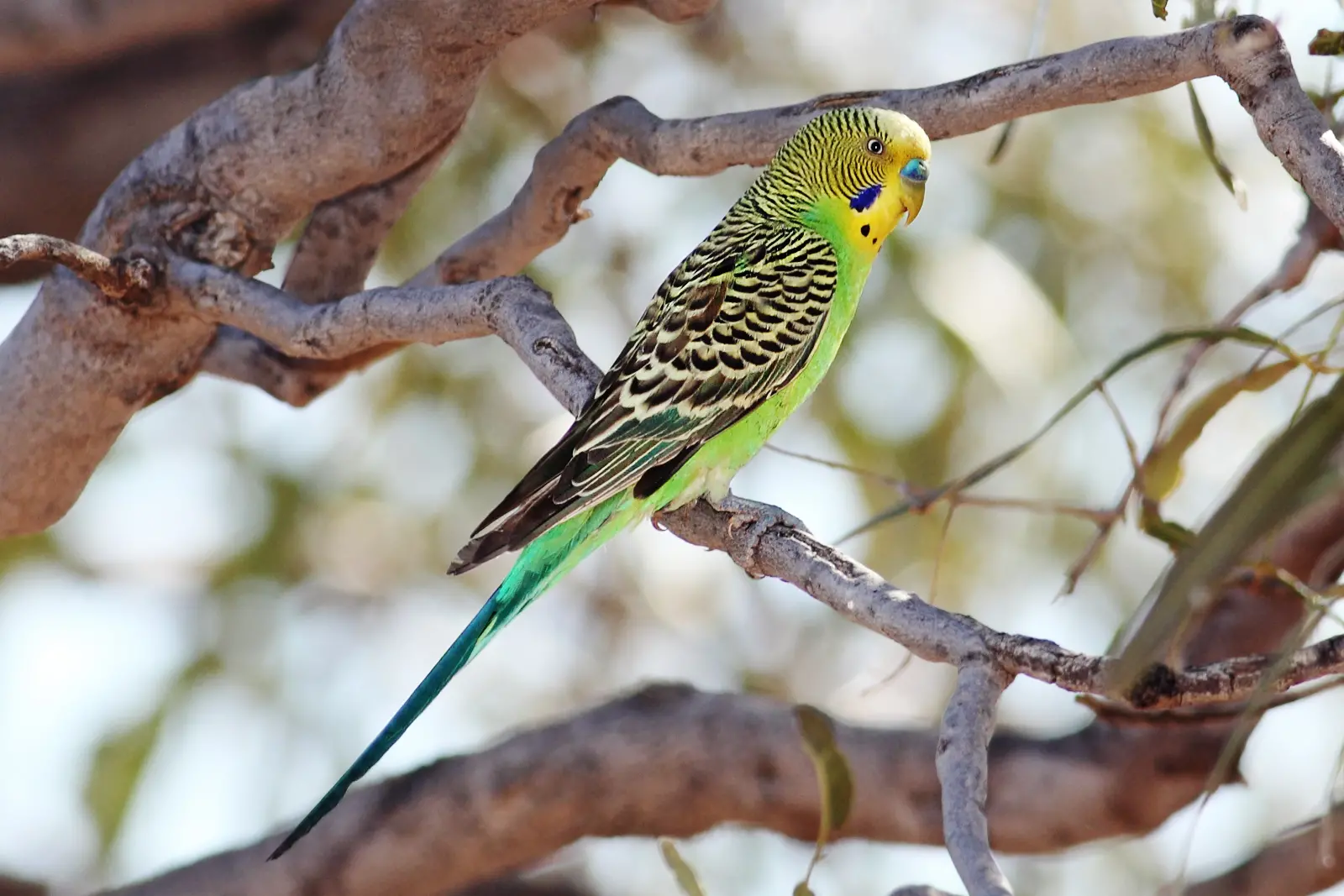
Socialization Needs of Budgerigars
Budgerigars are inherently social birds, thriving on interaction and companionship. Their social nature can be likened to human need for community and friendship. Here’s a detailed look at their socialization requirements:
1. Group Dynamics:
- In the wild, budgerigars live in flocks, which offer protection, foraging efficiency, and social interaction. Replicating this environment in captivity means that budgies do best when housed with at least one other bird, or when they receive ample interaction from their human caregivers.
2. Interaction and Play:
- Budgerigars require regular engagement to maintain their mental health. Owners should spend time talking to their birds, training them, and providing interactive toys to prevent boredom and ensure mental stimulation. Activities such as teaching tricks or mimicking sounds can forge a strong bond.
3. Vocalizations:
- These birds communicate through a range of sounds, including chirps, chattering, and singing(Continuing from the sub-section/paragraph left off in the guidelines point 3 before providing any new content as per the outline).
Budgerigar Behavior (continued)
Socialization Needs of Budgerigars (continued)
- Budgerigars often mimic sounds they hear frequently, including human speech, which is a testament to their adaptive and sociable nature. Engaging in consistent conversations or playing music can keep them entertained and mentally active.
4. Social Needs:
- Budgies are bonded by nature. Keeping a single budgie requires that the owner provides numerous interactions each day. If left alone for extended periods, solitary budgerigars might develop stress-induced behaviors such as excessive vocalization or feather plucking. Therefore, having a companion bird or spending substantial time with a single budgie is crucial.
5. Environmental Enrichment:
- Beyond companionship, environmental enrichment plays a key role in socialization. Providing an array of toys, mirrors, and interactive elements within their cage fosters mental stimulation. Rotating these toys regularly can also sustain their interest and prevent monotony.
Comparison Table:
| Socialization Aspect | Solitary Budgerigar | Paired or Group-Dwelling Budgerigar |
|---|---|---|
| Interaction Requirement | High: Requires substantial human interaction | Moderate: Interacts with other budgerigars, less reliant on humans |
| Risk of Stress Behaviors | Higher risk if left alone for long periods | Lower risk as social needs are met within the group |
| Environmental Stimulation | Crucial for mental health, requires frequent play and toys | Essential, but shared interactions lessen stress-inducing behavior |
Common Behavioral Issues in Budgerigars
Budgerigars, while generally playful and social, can exhibit several behavioral issues, particularly if their needs are not adequately met. Understanding these behaviors is crucial to providing proper care and intervention. Here’s a detailed exposition:
1. Biting:
- Biting in budgerigars can stem from fear, stress, or feeling threatened. This behavior often arises from improper handling or lack of socialization. Gradual, gentle interactions and building trust can reduce biting incidents over time. For example, moving slowly around your budgie and using positive reinforcement can help build a safe and trusting environment.
2. Screaming:
- Excessive vocalization or screaming is usually a sign of boredom, frustration, or attention-seeking. Budgies are vocal by nature, but loud, persistent calls may indicate they need more interaction or environmental enrichment. Providing toys, engaging in social activities, and ensuring they aren’t left alone for long periods can mitigate this behavior.
3. Feather Plucking:
- Feather plucking can result from stress, boredom, nutritional deficiencies, or medical conditions. If a budgie starts plucking its feathers, it’s essential to examine its environment, diet, and emotional state. Providing a stimulating environment with plenty of mental activities and ensuring a balanced diet can prevent this behavior.
4. Aggression:
- Aggressive behavior, such as lunging, biting, or territorial displays, can occur, especially during the breeding season or if the budgie feels its space is invaded. Observing body language and respecting the bird’s comfort levels can help alleviate these tendencies. For instance, an aggressive stance with fluffed feathers might indicate that the budgie needs some space.
5. Destructive Behavior:
- Chewing on cage bars or toys may be an outlet for pent-up energy or boredom. Providing a variety of chewable toys and ensuring regular out-of-cage time can cater to their natural foraging and exploratory instincts, reducing destructive tendencies.
Comparison Table:
| Behavioral Issue | Causes | Preventive Measures |
|---|---|---|
| Biting | Fear, stress, improper handling | Gentle interactions, positive reinforcement |
| Screaming | Boredom, frustration, attention-seeking | Frequent interaction, toys, environmental enrichment |
| Feather Plucking | Stress, boredom, nutritional deficiencies | Balanced diet, mental stimulation, veterinary check-ups |
| Aggression | Breeding season, territoriality | Respecting body language, providing adequate space |
| Destructive Behavior | Boredom, lack of exercise | Variety of chewable toys, regular out-of-cage time |
Training Techniques for Budgerigars
Training budgerigars not only enhances their behavior but also strengthens the bond between the bird and its owner. Effective training involves patience, consistency, and positive reinforcement. Here are detailed insights into training techniques for budgerigars:
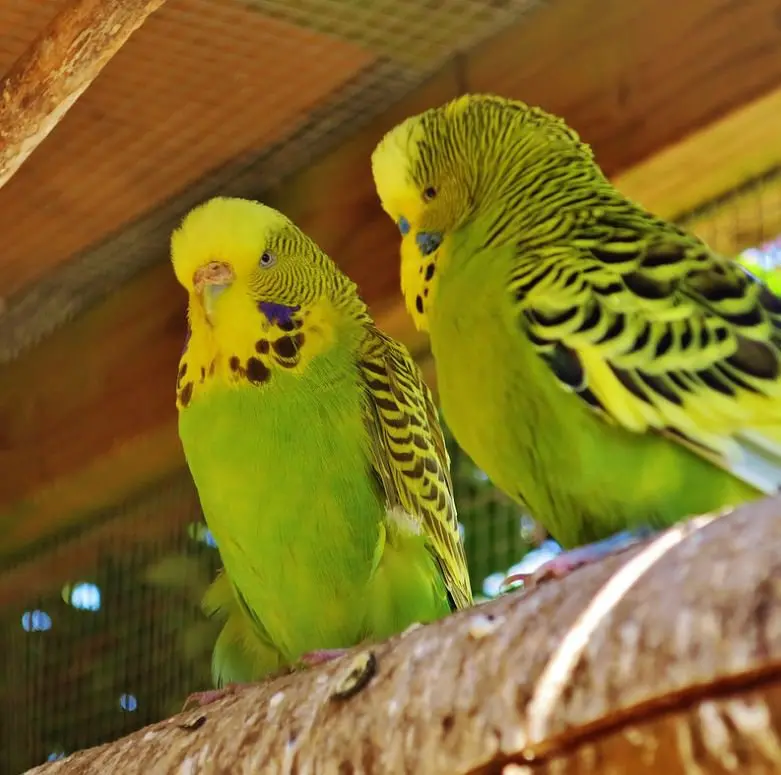
1. Positive Reinforcement:
- This technique involves rewarding desired behaviors with treats, praise, or petting. For example, when training a budgie to “step up” onto your finger, immediately rewarding the bird with a treat encourages it to repeat the behavior. This method relies on the principle of associating positive outcomes with specific actions.
2. Clicker Training:
- Clicker training uses a clicker device to mark the exact moment the budgie performs the desired behavior. The click sound is followed by a reward, reinforcing the action. This technique creates a clear communication channel between the owner and the budgie, making training more efficient. For instance, clicking and rewarding the bird every time it steps onto a perch can quickly teach the bird to repeat this action.
3. Target Training:
- Involves teaching the budgie to touch a target (like a stick) with its beak. This behavior can then be shaped into more complex tricks. For example, by guiding the bird to follow the target stick, you can train it to move across different areas or perform specific movements.
4. Short and Consistent Sessions:
- Training sessions should be short (10-15 minutes) to maintain the bird’s engagement and interest. Consistency in the training schedule helps reinforce learned behaviors. Regular, brief sessions are more effective than sporadic long ones.
5. Building Trust:
- Establishing trust is the foundation of successful training. Spending time near the cage, talking softly, and offering treats without immediate demands help build a bond of trust. For example, letting the bird come to you at its own pace without rushing the interaction fosters a safe training environment.
6. Engaging Environment:
- A stimulating environment with a variety of toys and activities encourages natural behaviors and reduces undesired actions. Birds that are mentally and physically stimulated are usually more responsive to training and less prone to behavioral issues.
Training Method Comparison Table:
| Training Technique | Methodology | Benefits |
|---|---|---|
| Positive Reinforcement | Rewarding desired behaviors with treats | Encourages repetition of good behavior |
| Clicker Training | Using a clicker to mark behaviors | Clear communication, efficient training |
| Target Training | Teaching to follow or touch a target | Can be shaped into complex tricks |
| Short Consistent Sessions | Brief, regular training intervals | Maintains engagement, reinforces learning |
| Building Trust | Gradual, non-demanding interactions | Foundation for successful training |
| Engaging Environment | Providing toys and activities | Reduces undesired behavior, promotes natural activities |
Breeding Budgerigars
Breeding budgerigars requires careful planning and consideration to ensure the health and well-being of both the parent birds and their offspring. Understanding selective breeding practices, factors affecting breeding, and recognizing maturity are pivotal for successful outcomes. Here’s an in-depth exploration of these aspects:
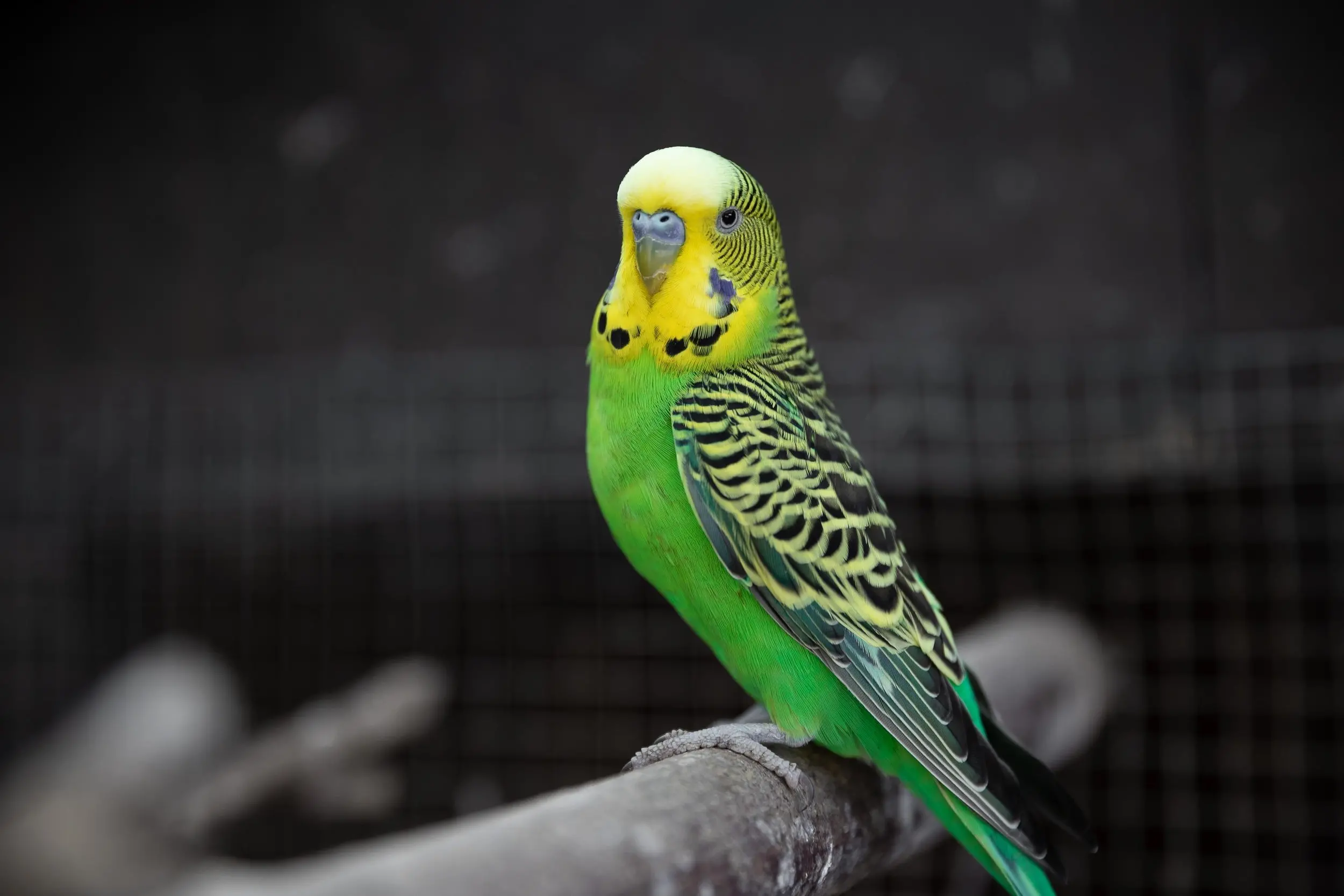
Selective Breeding Practices
Selective breeding in budgerigars aims to achieve specific traits, including coloration, feather patterns, and temperament. Here’s how ethical selective breeding is conducted:
1. Ethical Breeding Practices:
- Responsible breeders prioritize the welfare of the birds. This involves selecting healthy pairs with desirable traits, maintaining clean and spacious breeding environments, and providing transparent information to prospective buyers. Ethical breeding also includes avoiding excessive inbreeding to prevent genetic health issues.
2. Pair Selection:
- Choosing the right breeding pairs is fundamental. Breeding males should display smooth, vibrant feathers, and a bright blue cere, indicating health and readiness. Females should be in optimal health, with a clear understanding of their breeding condition, often marked by a brownish cere. Pairs are selected based on size, feather quality, and specific color traits desired.
3. Breeding Behavior:
- Understanding and recognizing courtship behaviors in budgerigars is crucial. Males often court females with elaborate chirping, head-bobbing, and feeding gestures. Females respond by preening and showing receptiveness, signaling their readiness to mate.
4. Genetic Considerations:
- Knowledge of budgerigar genetics is essential for successful breeding. Utilizing tools like Punnett squares, breeders can predict offspring traits based on dominant, recessive, and sex-linked genes. For example, breeding two lutino budgies will likely produce offspring with similar coloration due to the inheritance of specific recessive traits.
5. Evolution of English Budgies:
- Selective breeding has significantly shaped the development of different budgerigar varieties, such as the larger, more robust English budgies. These birds are selectively bred for size, temperament, and exhibition standards, showcasing how breeding practices evolve over time.
Comparison Table:
| Breeding Aspect | Ethical Breeding Practices | Unethical Breeding Practices |
|---|---|---|
| Pair Selection | Healthy, well-matched pairs | Poor health, over-breeding |
| Breeding Environment | Clean, spacious, well-maintained | Overcrowded, unhygienic, neglectful |
| Genetic Understanding | Informed predictions using genetic tools, avoids inbreeding | Lack of genetic planning, high risk of genetic disorders |
| Transparency | Full disclosure of lineage and health records | Concealment of bird’s true health and lineage |
Factors Affecting Budgerigar Breeding
Breeding budgerigars successfully involves managing various factors that influence the health and viability of the offspring. Here’s a detailed look at the crucial elements:
1. Pair Selection:
- As noted earlier, selecting the right pairs based on health, feather quality, and desired traits is vital. Ensuring that both male and female budgies are in peak condition enhances the likelihood of successful mating and healthy offspring.
2. Age and Maturity:
- Budgerigars typically reach sexual maturity around 6 months, but it’s advisable to wait until they are at least 1 year old for breeding. This ensures they are fully developed physically and behaviorally, improving their parenting abilities.
3. Health and Condition:
- The breeding pair’s health directly impacts the success of breeding. Signs of readiness include bright eyes, vibrant feathers, and a well-formed vent. A nutritious diet and routine veterinary check-ups are essential to maintain their condition.
4. Environmental Factors:
- The breeding environment must be conducive, providing clean, spacious cages with appropriate nesting boxes. Proper temperature and humidity levels are crucial to ensure comfort and reduce stress during breeding.
5. Genetic Considerations:
- Understanding the genetic background of the breeding pair is essential for producing desired traits and minimizing health risks. Breeders should consider dominant and recessive genes, as well as potential hereditary conditions.
Recognizing Budgerigar Maturity
Recognizing when a budgerigar has reached maturity is crucial for timing breeding effectively. Here’s how to identify maturity indicators:
1. Behavioral Signs:
- Mature budgerigars exhibit increased vocalizations, territorial behaviors, and courtship displays. Males often sing and perform elaborate displays to attract females, while females may show nesting behaviors.
2. Physical Changes:
- The cere color in females changes to a brown or tan hue during the breeding season, indicating readiness. Both genders may also display enhanced feather quality and size as they reach full maturity.
3. Age:
- While physical maturity can begin at 6 months, waiting until the birds are between 1 to 2 years old ensures they are both physically and psychologically prepared for breeding.
Comparison Table:
| Maturity Indicator | Description |
|---|---|
| Behavioral Signs | Increased vocalizations, courtship behaviors |
| Physical Changes | Cere color changes, enhanced feather quality |
| Age | Optimum breeding age: 1-2 years |
Budgerigar Lifespan
Budgerigars, also known as parakeets, typically have an average lifespan ranging from 5 to 10 years in captivity. However, with optimal care, some can live up to 15 years or longer. Factors influencing their longevity are multifaceted, encompassing genetics, diet, environment, exercise, social interaction, and veterinary care.
Factors Influencing Longevity of Budgerigars
Here is an elaborate overview of the factors that significantly impact the lifespan of budgerigars:
1. Genetics:
- The genetic background plays a pivotal role in determining a budgerigar’s lifespan. Some strains, such as American budgies, are known for their longer lifespans compared to others like English budgies, which may have shorter lifespans due to extensive inbreeding and selective breeding practices.
2. Diet:
- Nutrition is fundamental. A balanced diet that includes high-quality pellets, fresh fruits, and vegetables is crucial to prevent malnutrition and related health issues. Seeds should constitute only a small portion of their diet to avoid obesity and hepatic diseases.
3. Environment:
- The environment in which a budgerigar lives impacts its health. Clean, spacious cages with adequate ventilation, and free from drafts and extreme temperature fluctuations, are necessary to prevent respiratory issues and other health problems.
4. Exercise:
- Regular exercise is essential for maintaining their physical health. Allowing budgerigars time out of their cage to fly and explore promotes fitness, reduces stress, and prevents obesity.
5. Social Interaction:
- Budgerigars are social animals. Keeping them in pairs or providing ample interaction with their owners helps prevent loneliness and stress-related health issues. Ensuring they live in a stimulating environment with social interaction is vital for their mental and emotional well-being.
6. Veterinary Care:
- Consistent check-ups with an avian veterinarian facilitate early detection and treatment of potential health issues. Preventative care, including vaccinations and treatments for parasites, extends their lifespan significantly.
7. Mental Stimulation:
- Providing a variety of toys and activities keeps budgerigars mentally engaged, reducing boredom and associated stress behaviors like feather plucking or self-harm.
Comparison Table:
| Longevity Factor | Description and Importance |
|---|---|
| Genetics | Determines resilience and susceptibility to inherited conditions |
| Diet | Balanced diet prevents malnutrition and health issues |
| Environment | Clean, spacious, well-ventilated habitat essential for health |
| Exercise | Regular flight and activity maintain physical fitness |
| Social Interaction | Prevents loneliness and stress, essential for mental health |
| Veterinary Care | Early detection and treatment of health issues |
| Mental Stimulation | Toys and activities prevent boredom and stress behaviors |
Average Lifespan Comparison: English vs. Australian Budgerigars
Understanding the differences in lifespan between English and Australian budgerigars provides insights into how selective breeding and environmental factors influence longevity.
1. English Budgerigars:
- These show budgies typically have shorter lifespans, averaging between 7 to 9 years. Selective breeding for show standards often leads to inbreeding, which can predispose them to genetic health issues and reduce their life expectancy.
2. Australian Budgerigars:
- In contrast, Australian budgerigars, also known as wild-type or traditional budgies, generally live longer, with a potential lifespan extending up to 15 years or more under optimal care. Their genetic closeness to wild ancestors grants them a natural robustness and resilience, contributing to extended longevity.
Comparison Table:
| Aspect | English Budgerigar | Australian Budgerigar |
|---|---|---|
| Average Lifespan | 7 to 9 years | Up to 15 years |
| Predisposition to Health Issues | Higher due to selective breeding | Lower due to natural genetic robustness |
| Genetic Factors | Susceptibility due to inbreeding | Stronger genetic pool |
Budgerigar in Aviculture
Budgerigars hold a prominent place in aviculture due to their vibrant personalities, diverse colorations, and ease of care. The following aspects explore exhibition and show standards, popularity, availability, and maintenance costs:
Exhibition and Show Standards
Exhibition and show standards for budgerigars set benchmarks for evaluating their conformation, color, feather quality, and overall health. Here’s an in-depth look:
1. General Standards:
- Show budgies, or exhibition budgies, are judged based on adherence to breed standards such as conformation, coloration, feather quality, and health. These standards vary among organizations like the Budgerigar Society and the American Budgerigar Society but focus on similar characteristics.
2. Conformation:
- Judges seek well-rounded, proportionate body shapes. Show budgies should exhibit a straight and upright posture with a smooth transition between the head, neck, and body. Ideal body size should ensure proper balance and symmetry.
3. Coloration:
- Vibrant, well-defined colors are essential. Any fading or uneven patterns are considered flaws. Judges require clear coloration that aligns with breed standards, including the vibrant cere.
4. Size and Weight:
- Larger budgies are generally preferred, signifying good health. However, size must be proportionate to body structure, ensuring the bird doesn’t appear disproportionate. Ideal sizes for show conditions adhere strictly to breed standards.
5. Condition and Health:
- Show budgies must be in excellent physical condition. Judges assess the bird’s activity level, feather cleanliness, and overall robustness. Visible signs of illness or defects can lead to disqualification.
6. Penalties for Faults:
- Common faults include flecking on the head, color patchiness, and structural deformities. Deviations from the ideal coloring or form result in lower scores or disqualification. For example, a bird showing signs of scaly face is subject to immediate disqualification.
Comparison Table:
| Exhibition Standard | Description |
|---|---|
| Conformation | Well-rounded, proportionate, straight posture |
| Coloration | Vibrant, well-defined, adhering to breed standards |
| Size and Weight | Larger size preferred, proportionate body structure |
| Condition and Health | Excellent physical condition, clean feathers |
| Penalties for Faults | Disqualification for color patchiness, deformities |
Popularity and Availability of Budgerigars
Budgerigars are exceedingly popular in aviculture due to their vibrant colors, social nature, and relatively easy care requirements. Here’s a detailed overview of their popularity and availability:
1. Demand in Aviculture:
- Budgies are favored for their social behavior, affordability, and wide range of color mutations. Their pleasant temperament makes them suitable pets for both novice and experienced bird owners.
2. Price Range:
- Prices for budgerigars vary based on lineage, color mutations, and show status. Regular pet budgies typically range from ₫235,000 to ₫821,000 (approximately $10 to $823,000), whereas show-quality or exhibition budgies command higher prices due to selective breeding practices aimed at enhancing specific traits.
3. Breeding Programs:
- Numerous breeders focus on producing show-quality budgies, contributing to the increased interest in unique color mutations and physical traits. Targeted breeding programs aim to produce healthy, vibrant specimens suitable for competition and as pets.
4. Community and Competitions:
- A thriving community, including local aviculture clubs and national societies like the Budgerigar Society and the American Budgerigar Society, organize regular competitions and exhibitions. These events allow breeders to showcase their birds, fostering excitement and interest in budgie aviculture.
Comparison Table:
| Popularity Aspect | Description |
|---|---|
| Demand in Aviculture | High demand due to social behavior and affordability |
| Price Range | ₫235,000 to ₫823,000 for regular budgies; higher for show budgies |
| Breeding Programs | Focus on producing show-quality budgies |
| Community and Competitions | Active clubs and societies, regular exhibitions |
Costs and Maintenance of Budgerigars
Owning a budgerigar involves initial and ongoing costs to ensure their well-being. Here’s an extensive breakdown of these aspects:
1. Initial Purchase Price:
- The cost of acquiring a budgerigar ranges from ₫235,000 to ₫823,000 depending on factors like color mutation, health, and source (breeder or pet store).
2. Caging and Accessories:
- A suitable cage for a budgerigar costs between ₫1,175,000 to ₫4,700,000, depending on size and quality. Accessories such as perches, toys, food, and water containers add an additional ₫1,175,000 to ₫2,350,000 to the initial setup cost.
3. Food and Supplies:
- Budget around ₫235,000 to ₫470,000 monthly for high-quality pellets, seeds, fresh fruits, and vegetables. Accessories like cuttlebones and mineral blocks, essential for calcium, cost approximately ₫117,000 to ₫235,000 per month.
4. Veterinary Care:
- Regular check-ups with an avian vet cost about ₫1,175,000 to ₫2,350,000 per visit. Annual wellness visits ensure early detection of health issues, contributing to the overall longevity and quality of life of the budgerigar.
5. Maintenance Considerations:
- Daily Care: Involves changing water, providing fresh food, and removing leftover food to prevent contamination. Daily interaction and mental stimulation through play and training are crucial for their well-being.
- Cage Maintenance: Regular cleaning, at least weekly, is essential to maintain hygiene. This involves scrubbing the cage with bird-safe disinfectants and replacing bedding or substrate as needed.
Comparison Table:
| Cost/Maintenance Aspect | Estimated Cost |
|---|---|
| Initial Purchase Price | ₫235,000 to ₫823,000 |
| Caging and Accessories | ₫2,350,000 to ₫7,050,000 (cage + accessories) |
| Monthly Food and Supplies | ₫235,000 to ₫470,000 |
| Veterinary Care | ₫1,175,000 to ₫2,350,000 per visit |
| Daily Care | Fresh food and water, social interaction |
| Cage Maintenance | Weekly cleaning, replace bedding/substrate |
Budgerigar Health
Ensuring the health of budgerigars involves understanding common health issues, implementing preventive care, and staying informed about veterinary considerations. Here’s a comprehensive guide:
Common Health Issues in Budgerigars
Budgerigars can suffer from various health problems influenced by their environment, diet, and genetics. Awareness of these issues helps in timely intervention and effective treatment:
1. Respiratory Infections:
- Respiratory issues are prevalent in budgerigars, characterized by symptoms like sneezing, coughing, wheezing, and difficulty breathing. Poor ventilation, overcrowding, and dusty environments contribute to these infections. Immediate veterinary care is essential, often involving antibiotics or anti-inflammatory medications.
2. Psittacosis (Budgie Fever):
- This zoonotic bacterial infection can transmit to humans. Budgies may exhibit lethargy, difficulty breathing, and abnormal droppings. Infected birds require isolation and veterinary treatment, typically with antibiotics.
3. Vitamin A Deficiency:
- A lack of vitamin A results in dry, scaly skin, dull feathers, and increased susceptibility to respiratory infections. Ensuring a balanced diet with vitamin A-rich foods, such as carrots and leafy greens, helps prevent this deficiency.
4. Mite Infestation:
- Mites cause significant discomfort, identified by excessive scratching, flaky skin, and feather loss. Treatment includes anti-parasitic medications prescribed by a vet and maintaining rigorous cage hygiene.
5. Feather Plucking:
- This behavior is triggered by stress, boredom, or underlying health conditions. Providing a stimulating environment, addressing potential stressors, and ensuring a balanced diet can mitigate feather plucking.
6. Avian Gout:
- An excess of protein or calcium leads to gout, marked by swollen joints and difficulty moving. Veterinary guidance is crucial for dietary adjustments and appropriate treatments.
7. Tumors and Cancer:
- Older budgerigars are more susceptible to tumors, especially in reproductive organs and kidneys. Symptoms include weight loss and behavioral changes. Veterinary diagnosis and treatment are essential for management.
Comparison Table:
| Health Issue | Symptoms | Preventive Measures |
|---|---|---|
| Respiratory Infections | Sneezing, coughing, difficulty breathing | Clean environment, regular vet checks |
| Psittacosis | Lethargy, difficulty breathing, abnormal droppings | Isolation, antibiotics |
| Vitamin A Deficiency | Dry skin, dull feathers, respiratory issues | Balanced diet with vitamin A-rich foods |
| Mite Infestation | Scratching, flaky skin, feather loss | Anti-parasitic treatment, cage hygiene |
| Feather Plucking | Feather loss, stress behavior | Environmental enrichment, balanced diet |
| Avian Gout | Swollen joints, mobility issues | Veterinary advice, dietary adjustments |
| Tumors and Cancer | Weight loss, behavioral changes | Veterinary diagnosis and treatment |
Preventative Care for Budgerigars
Implementing preventive care practices ensures budgerigars maintain optimal health and live longer, happier lives:
1. Balanced Diet:
- A diet rich in high-quality pellets, fresh fruits, and vegetables is vital. Limiting seeds prevents obesity and related health issues. Access to calcium sources, such as cuttlebone and mineral blocks, is also essential.
2. Regular Veterinary Check-ups:
- Routine vet visits, ideally twice a year, help catch diseases early. Vets provide guidance on care, diet, and overall health maintenance, ensuring prompt intervention when necessary.
3. Clean Environment:
- Maintain a clean, dust-free living space. Regular cage cleaning prevents respiratory issues and infections. Sterilize perches, toys, and food containers regularly.
4. Mental and Physical Stimulation:
- Provide a range of toys and activities to stimulate the budgie’s mind and body. Regular out-of-cage time for flight and exercise promotes physical health and reduces stress.
5. Avoiding Overcrowding:
- Ensure adequate space for each budgie to fly and move freely. Overcrowded environments increase stress and the risk of disease transmission.
6. Monitoring Behavior:
- Vigilant observation for changes in behavior, appetite, or droppings helps detect early signs of illness. Budgies often hide symptoms of sickness, so close monitoring is crucial.
Comparison Table:
| Preventative Measure | Description |
|---|---|
| Balanced Diet | High-quality pellets, fresh fruits and vegetables |
| Regular Veterinary Check-ups | Bi-annual vet visits for early disease detection |
| Clean Environment | Regular cage cleaning to prevent infections |
| Mental and Physical Stimulation | Variety of toys and activities, flight time |
| Avoiding Overcrowding | Adequate space to reduce stress and disease |
| Monitoring Behavior | Observing for changes in behavior or health |
Veterinary Considerations for Budgerigars
Veterinary care is integral to maintaining the health and longevity of budgerigars. Here are key considerations:
1. Regular Health Checks:
- Vet check-ups every six months monitor budgerigar health, conduct physical exams, and address nutritional or maintenance concerns. These visits help in the early detection of health issues, providing essential care for respiratory infections, mites, and other conditions.
2. Common Health Issues Awareness:
- Educate yourself on common health problems like respiratory infections, feather plucking, and mites. Recognizing symptoms such as coughing, sneezing, or labored breathing can prompt timely veterinary intervention.
3. Preventative Care Practices:
- Routine health checks, balanced diets, and maintaining a clean environment all form part of a preventive care regimen. Regular vet visits ensure early diagnosis and treatment of diseases, fostering a healthy, long-lasting relationship between budgerigars and their owners.
Comparison Table:
| Veterinary Consideration | Description |
|---|---|
| Regular Health Checks | Bi-annual check-ups for early disease detection |
| Common Health Issues Awareness | Knowledge of symptoms and interventions |
| Preventative Care Practices | Balanced diet, clean environment, regular vet visits |
Budgerigar Colors and Variations
Budgerigars exhibit a stunning array of colors and patterns due to selective breeding, enhancing their visual appeal and genetic diversity. Understanding these variations provides insights into their care and breeding.
Color Mutations in Budgerigars
Budgerigar color mutations are classified primarily into two groups: color mutations and pattern mutations, each contributing uniquely to their appearance. Here’s a comprehensive exploration:
Color Mutations
1. Green Series (Yellow-Based):
- The natural color of wild budgerigars, the green series includes variations such as olive and yellowface. These mutations typically see variations where the intensity of the yellow pigment affects their appearance. The dominant gene for green gives rise to diverse shades and enhances vibrancy.
2. Blue Series (White-Based):
- In this mutation series, the absence of yellow pigment results in various shades of blue, from sky blue to cobalt. Blue mutations are inherited recessively, influencing the strategies breeders use to propagate these colors.
3. Yellow-Based Mutations (Lutino and Albino):
- Lutino budgies exhibit bright yellow plumage with red or pink eyes, devoid of melanin. Albino mutations result in completely white birds with pink or red eyes. These sought-after mutations highlight genetic traits but may pose health challenges due to reduced pigmentation.
4. Grey-Based Mutations:
- Greywing and dilute mutations modify the shading from regular green or blue to a silvery appearance. These mutations often result in lighter feather colors and can impact feather quality and overall health.
5. Rare Mutations:
- Cinnamon budgies have brownish feathers, while fallow mutations display a pastel, washed-out look. These visually striking mutations require meticulous breeding practices due to their recessive nature.
Pattern Mutations
1. Pied:
- Characterized by irregular patches of colorless feathers interspersed with the base color. The pied mutation can be dominant or recessive, influencing how frequently it appears in offspring.
2. Opaline:
- Presenting modified wing markings, opaline budgies often have enhanced body color and a pearlescent feather effect, making them popular for their attractive appearance.
3. Spangle:
- This mutation gives feathers light-colored edges, creating an iridescent, lacy look. The spangle is a pattern mutation affecting color distribution and often sought after by enthusiasts for its unique visual appeal.
Comparison Table:
| Mutation Type | Description | Genetic Inheritance |
|---|---|---|
| Green Series | Natural green color, variations in yellow intensity | Dominant |
| Blue Series | Absence of yellow pigment, various blue shades | Recessive |
| Lutino and Albino | Bright yellow or white with red/pink eyes | Recessive |
| Grey-Based Mutations | Silvery appearance, greywing and dilute variations | Variable |
| Rare Mutations | Cinnamon (brownish), fallow (pastel) | Recessive |
| Pied | Irregular color patches | Dominant/Recessive |
| Opaline | Enhanced body color, modified wing markings | Recessive |
| Spangle | Light-colored feather edges, iridescent look | Dominant |
Notable Color Patterns and Their Impact
The implications of budgerigar color mutations on breeding and health include assessing genetic challenges and appreciating the aesthetic diversity they bring to aviculture.
1. Breeding Implications:
- Understanding color genetics is crucial for breeding. Utilization of techniques like Punnett squares helps predict offspring traits, ensuring ethical and informed breeding practices. For instance, breeding lutino or albino birds requires careful genetic assessment to avoid health issues related to reduced pigmentation.
2. Health Risks:
- Some mutations predispose budgerigars to specific health problems. Lutino and albino mutations can increase susceptibility to liver disease and UV sensitivity due to reduced melanin. Regular veterinary care and a balanced diet are essential for maintaining their well-being.
3. Aesthetic Diversity:
- The variety of budgerigar mutations enhances their appeal among enthusiasts. The broad spectrum of colors and patterns provides opportunities for unique breeding combinations, fostering a vibrant community within aviculture.
Comparison Table:
| Mutation Impact Area | Description |
|---|---|
| Breeding Implications | Informed predictions using genetic tools, avoiding genetic disorders |
| Health Risks | Susceptibility to specific conditions due to reduced pigmentation |
| Aesthetic Diversity | Wide range of colors and patterns enhancing avian appeal |
By understanding budgerigar mutations and their implications, breeders and enthusiasts can ensure ethical practices and appreciation of these fascinating birds. Proper care and informed breeding contribute to the health and continuity of diverse colorations.
Conclusion
In-depth exploration of budgerigars underscores their complex beauty and engaging nature. From their diverse types and vibrant colors to their intricate care needs and social behaviors, these birds enrich the lives of those who welcome them into their homes. Ensuring their well-being involves a holistic understanding of their housing, diet, health, and social requirements. Enthusiasts and breeders alike can derive immense satisfaction from fostering these delightful creatures, contributing to their vibrant communities and appreciating the profound joy budgerigars bring to aviculture. Whether as charming pets or compelling show birds, budgerigars continue to enchant and inspire with their spirited presence and colorful splendor.




